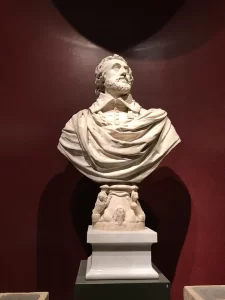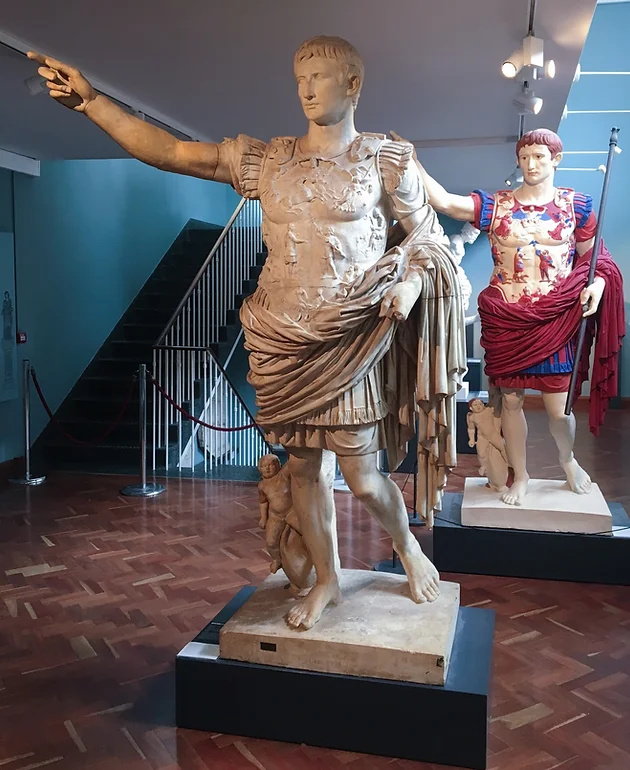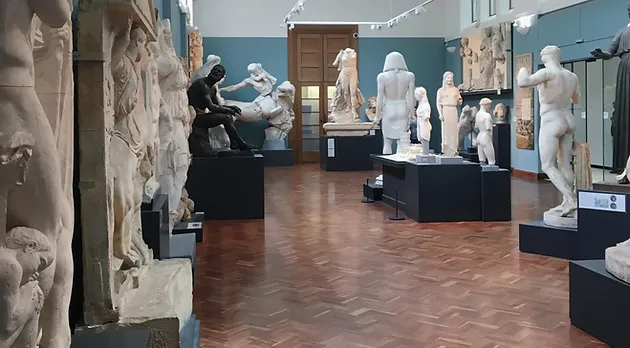Greek and Roman sculpture has always been considered a paradigm of art through the centuries. However, this paradigmatic ‘whiteness’ has been, and continues to be, manipulated to legitimise concerning ideas about cultural and racial superiority, and it is vital that we question this practice.
When visitors walk past the threshold of the celebrated Ashmolean Museum, the left entrance gallery catches their attention, with its white marble ancient sculpture collection donated by 17th century collector Thomas Howard, Earl of Arundel. It seems only fitting that a visit to a museum of art and archaeology begins in such a fashion: Greek and Roman sculpture has always been considered a paradigm of art through the centuries. However, this paradigmatic ‘whiteness’ has been, and continues to be, manipulated to legitimise concerning ideas about cultural and racial superiority, and it is vital that we question this practice.

The display of these sculptures have driven the development of western art. The examples available to Renaissance sculptors engendered a divorce between sculpture and painting as separated – and competitive – disciplines in this period. Sculptors worked with monochromatic materials such as the white marble of the Greeks or bronze of the Romans. The aesthetic canon of sculpture developed monochromatically from then on: sculptors used classical paradigms for inspiration and criticised artists who bridged sculpture and painting, adding colourful hues and unsculptured decoration to three-dimensional representations.
Greco-Roman antiquity is celebrated and revered as the source and foundation of Western Civilisation. It is this sentiment which idealised the canon of white marble sculpture we know today – and the beliefs entrenched in its whiteness. This reverence is exhibited by the Ashmolean, which perpetuates the conceptual importance of these objects to Western cultural heritage by displaying them in its entrance. It is this reverence which, in taking these sculptures as models, artists from the Renaissance to the present have capitalised upon to legitimise and authenticate their own work, assimilating into an accepted tradition which asserts authority – and indeed, Imperial power.
This tendency is not restricted to art but appears wherever people use the works and words of ancient Greeks or Romans to lend credence to their own ideas and bolster reputations. Why would Thomas Howard, grand tourist and prominent courtier in the courts of James I and Charles I, choose to collect antique sculpture? Why do politicians use quotations from Roman emperors in their speeches? Why did classic architecture pop up in fascist Germany? Why did Mussolini construct an imperial procession route through the Roman fora? Why do the wider contemporary far-right parties appropriate classical voices and imagery? Why has neo-Nazi white supremacist group Identity Evropa used images of white classical statues on their posters? [1]

The foundational status Greco-Roman antiquity enjoys in “Western Civilisation” means its unsavoury aspects are utilised to push and justify narrow, racist or sexist agendas. Just as slave owners legitimised the slave trade by its ancient model, and male supremacists highlight the restricted position of women in ancient societies, so now do ethno-nationalists use Greco-Roman antiquity, considered visually and culturally ‘white’, to push an anti-immigrant, white supremacist agenda.
This is ironic in multiple ways. Firstly, although Classics is often viewed as the ‘oldest dead white European males’, the Greeks and Romans did not have the same colour-based racism we do today. Discourses of whiteness and blackness were simply applied along gender lines: Homer uses adjectives such as ‘white-armed’ to complement domestic female characters, while men were represented as darker, due to their active outside roles. These groups are simply retrojecting a modern binary which became prominent in the polarising slave-trade: when Europeans started to see themselves as whiter than another human being, naturally their ‘cultural ancestors’ were whitewashed too.

Secondly, the material sculpture which provides fodder for these racist ideas was in fact never white at all. This myth originates in the discovery of ancient sculpture in states where its colour had deteriorated, and was perpetuated through aggressive restoration and cleaning methods. Mark Abbe and Vincenz Brinkmann’s work on investigation of marble surface under microscope, ultraviolet and infrared photography has revealed indisputable evidence of polychromy, painted skin colour, patterned dress and bright rich colours. [2] Their work has led to reconstruction projects and exhibitions such as ‘Gods in Colour’ in which polychromatic models of antique sculptures were placed alongside their ancient counterparts in an iconoclastic display of vibrant colour. [3]
The truth of ancient polychromy has been evident for millennia in ancient texts such as Pliny and Vitruvius, and unequivocal in archaeological excavations. However, modern Classicists quickly delineated an Orientalist-style boundary between the output of Greco-Roman and Egyptian (for example) cultures in which colour was ‘othered’ and white marble normalised.
Not uncoincidentally, this visual cultural contrast coincided with the new categories introduced by British imperial expansion. The canon, formulated by the power of apparent ancient artistic decision, meant people felt passionately about the lie: Auguste Rodin supposedly pounded his chest and said ‘I feel it here that they were never coloured.’ This almost fanatical idealisation of white marble stems from an error which set Greco-Roman culture firmly apart from ‘non-Western’ art.’
Who benefited and continues to benefit from this mistake? Those who privilege western culture as superior, who seek to draw regimented hierarchical boundaries between cultures and legitimise their own agendas through connection with ancient civilisations. We might argue that the Ashmolean museum is doing nothing wrong in exhibiting these sculptures as they were originally housed. We are so used to the norm of white marble that it passes unnoticed. Even the sculpture gallery itself is designed around this colour fact: the coloured walls and pediments highlight the white works on display.

However, the museum has a responsibility to emphasise that white marble in ancient sculpture was never the intentional artistic decision that the canon idealises. That ancient sculpture is perceived as white is not an accident but a recurring choice on the part of excavators, collectors and curators to perpetuate a myth that white was both the ideal and the reality.
The Ashmolean has only one polychromatic plaster model in its cast gallery, and only one label which mentions a statues original colour. Despite the facts that the ‘Gods in Colour’ exhibition toured here, even this has left as little trace as there is colour on the sculpture.
In these political circumstances, museums have a responsibility to do more to set the record straight, not just in the interests of accurate historical analysis but of dispelling a myth which perpetuates notions of white supremacy, and to do so in its entrance hall, not in its back rooms.
Written by Lara Drew
[2] M. Talbot, ‘The Myth of Whiteness in Classical Sculpture’, The New Yorker, 2018
[3] V. Brinkmann, R. Dreyfus and U. Koch-Brinkmann (eds) Gods in Colour: Polychromy in the Ancient World, San Francisco, 2017
Other Readings:
- https://eidolon.pub/we-condone-it-by-our-silence-bea76fb59b21
- https://eidolon.pub/classics-beyond-the-pale-534bdbb3601b
- https://www.artforum.com/news/classicist-receives-death-threats-from-alt-right-over-art-historical-essay-68963
- https://eidolon.pub/how-to-be-a-good-classicist-under-a-bad-emperor-6b848df6e54a
- https://aeon.co/essays/when-homer-envisioned-achilles-did-he-see-a-black-man
- https://www.forbes.com/sites/drsarahbond/2017/04/27/whitewashing-ancient-statues-whiteness-racism-and-color-in-the-ancient-world/#177e4c0075ad
- https://hyperallergic.com/383776/why-we-need-to-start-seeing-the-classical-world-in-color/
- https://www.metmuseum.org/toah/hd/prms/hd_prms.htm
- https://www.newyorker.com/magazine/2018/10/29/the-myth-of-whiteness-in-classical-sculpture





